Whilst the likes of Spain and the Netherlands have been instrumental in shaping European football tactically into what it is today, there are others who have a rich history in the game and a heritage that should be respected.
One of those is Hungary, who were one of the most dominant sides of the 20th century and enjoyed a particularly successful period during the 1950s, with the Golden Team (which included the legendary Ferenc Puskás) ruling the world during that decade and proving to be the source of nightmares for anyone who came across them on the field of play.
However, since the 1986 World Cup, the Eastern European nation have struggled to match those feats and endured a thirty-year period when they failed to reach the finals of any major tournament, which included a sixth-placed finish in their Euro 2008 qualifying group and a defeat to Malta seen by many as the lowest point in their decline.
Many would have wondered if they would ever be able to recapture the glory of yesteryear during those dark days, and the answer to those questions arrived in 2016 when the national team ended their drought by qualifying for the Euro finals, which was then followed by further appearances at Euro 2020 and now Euro 2024.
The current side might not be at the same world-beating level as the Golden Team were, but there is no doubting that they will not be a team that anyone should take lightly, as this tactical analysis will highlight.
Predicted Starting XI
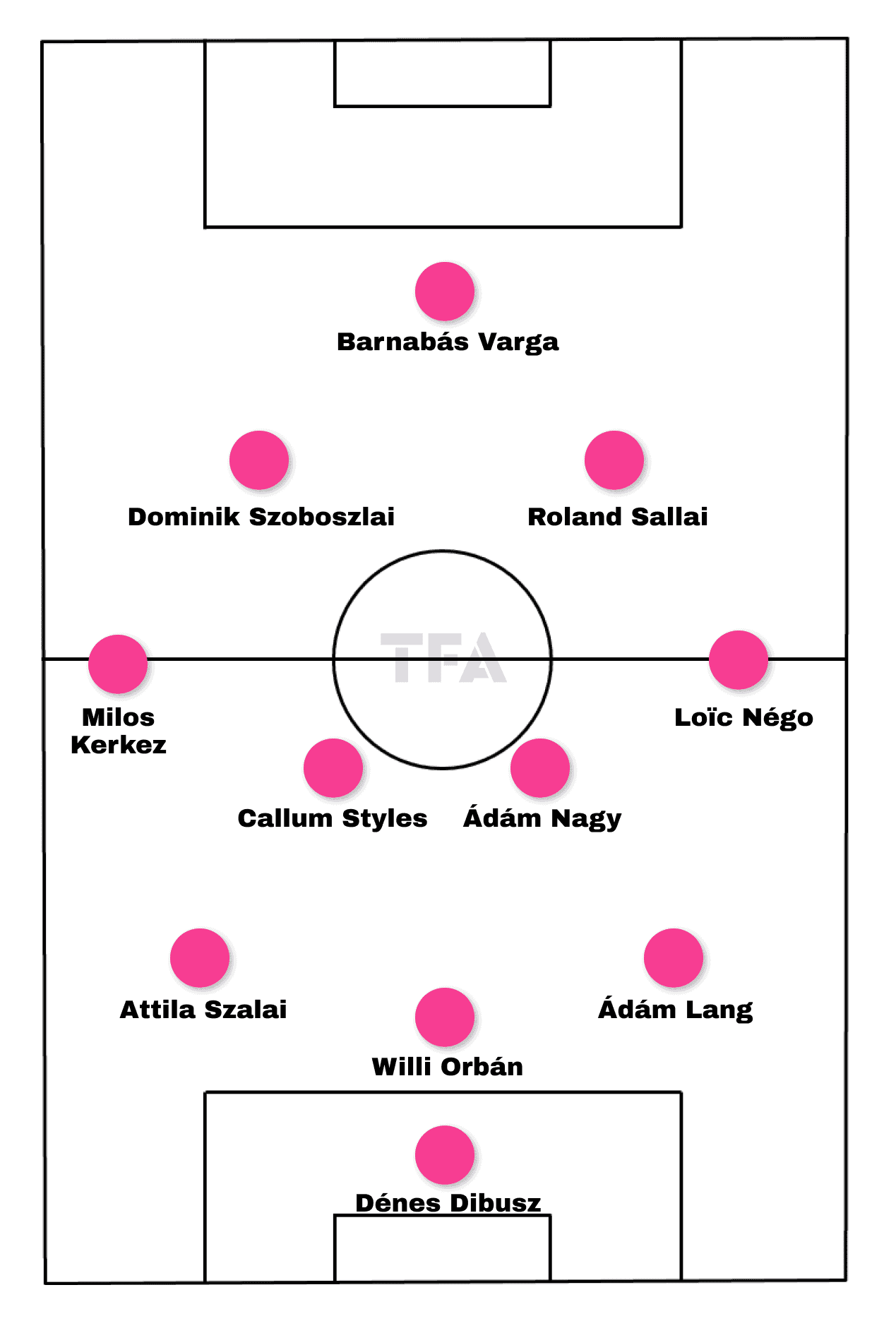
Under Italian head coach Marco Rossi, who has been in charge since 2018, Hungary have more often than not opted for a wing-back formation, and it can be expected that they will continue to rely on that system throughout their Euro 2024 campaign.
Within that formation, there are a few positions that look fairly settled, such as in goal, where Ferencváros captain Dénes Dibusz seems to have the trust of his manager, and so is likely to start between the posts.
In front of him, the back three is also largely settled, with the trio of Ádám Lang, Willi Orbán and Attila Szalai complimenting each other well when it comes to both getting out and winning the ball and staying back to protect the goal.
It seems plausible that all three could once again form the rearguard line in Germany.
Where some doubt starts to come in is at wing-back, with Hungary enjoying some flexibility and having different types of players available to them in those positions, meaning that they have the luxury of selecting players for each game that will suit what they will be coming up against.
The key thing, though, is that there always has to be balance, with one of them a slightly more attack-minded player and the other more inclined to stay a little further back, and that is why the duo of Loïc Négo and Milos Kerkez complement each other well, with the former more of a defender for Ligue 1 side Le Havre whilst the latter tends to play in an attacking full-back role for Premier League club Bournemouth.
Inside them, there is also a need for different types of players to be present who form a strong pairing, and both Ádám Nagy and Callum Styles meet those requirements due to the former being a defensive midfielder with a strong passing range and the latter fulfilling more of the box-to-box specification that then allows Hungary’s transitions to flow more easily.
Having them in the team also has the knock-on effect of freeing up Liverpool’s Dominik Szoboszlai to focus on supporting attacks, which Rossi is particularly keen on.
So it is likely that both he and Roland Sallai will be seen inside the final third more often and lending support to leading striker Barnabás Varga, who, like the aforementioned Dimusz, seems to be the first choice in his position.
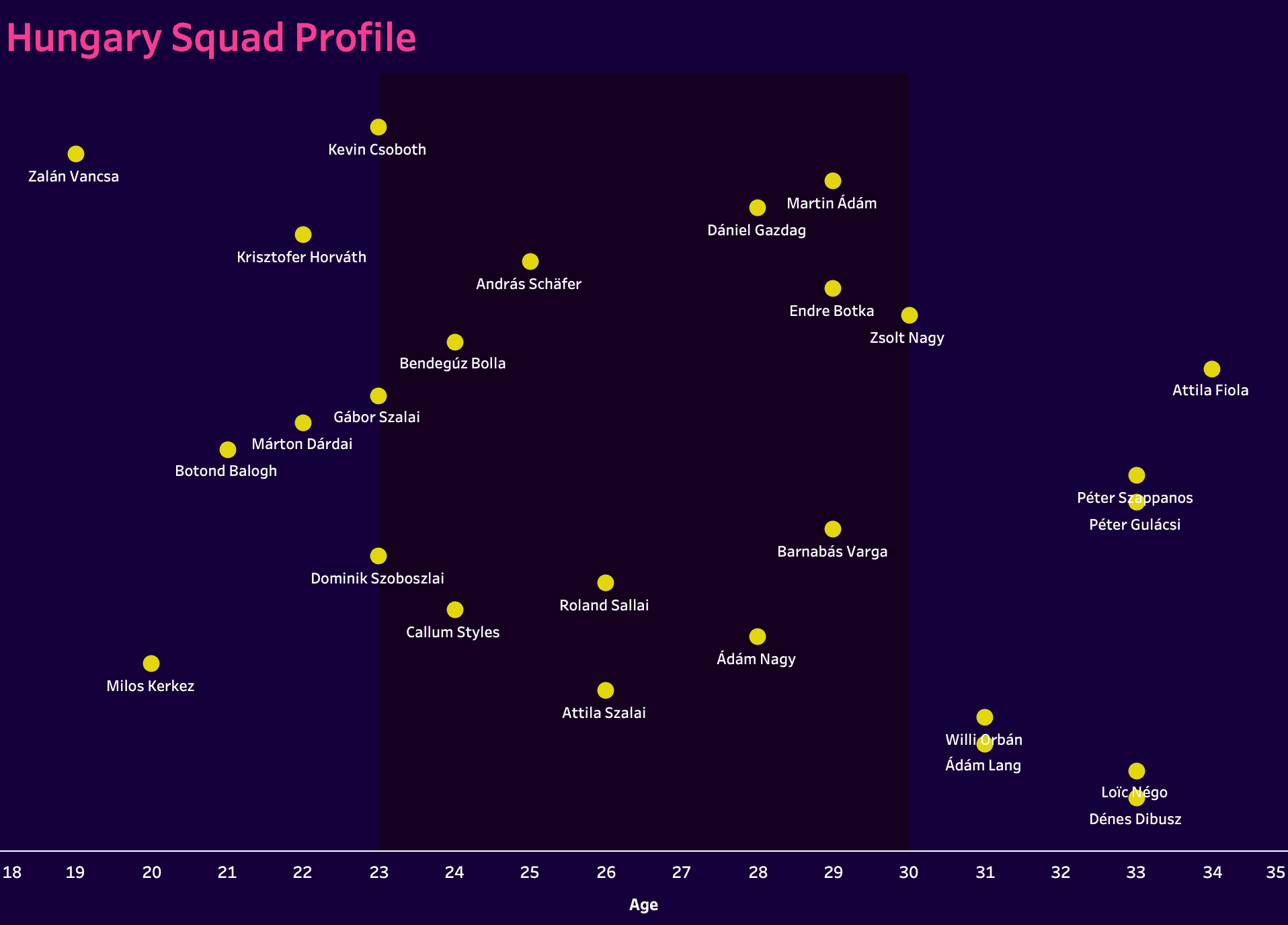
That might be the starting XI, but it is also essential to examine the wider depth of Hungary’s squad, with this graphic indicating the spread of ages of those that seem likely to be included in Rossi’s eventual 26-player squad.
What is immediately clear is that they have a good balance between players at the start, middle, and end of their international careers.
That again allows Rossi to make squad selections based on what his side will be facing in each match.
As a result, he will always be able to give his players the best possible chance of progressing beyond the group stages and into the knockout rounds, which is where they will harbour high hopes of reaching.
There is one area of the graphic that is particularly important to look at, though, which is the side with the older players in it.
As can be seen, those in that section are mainly part of the goalkeeping and defensive unit, and having that experience inside their own third could be vital in matches when Hungary are under pressure and when being organised and resilient are the priority.
With many pointing to the fact that keeping clean sheets carries as much weight as scoring goals, it is clear that Hungary have a good chance of ticking that box and ensuring that they are not an easy side to break down.
Attacking Phase
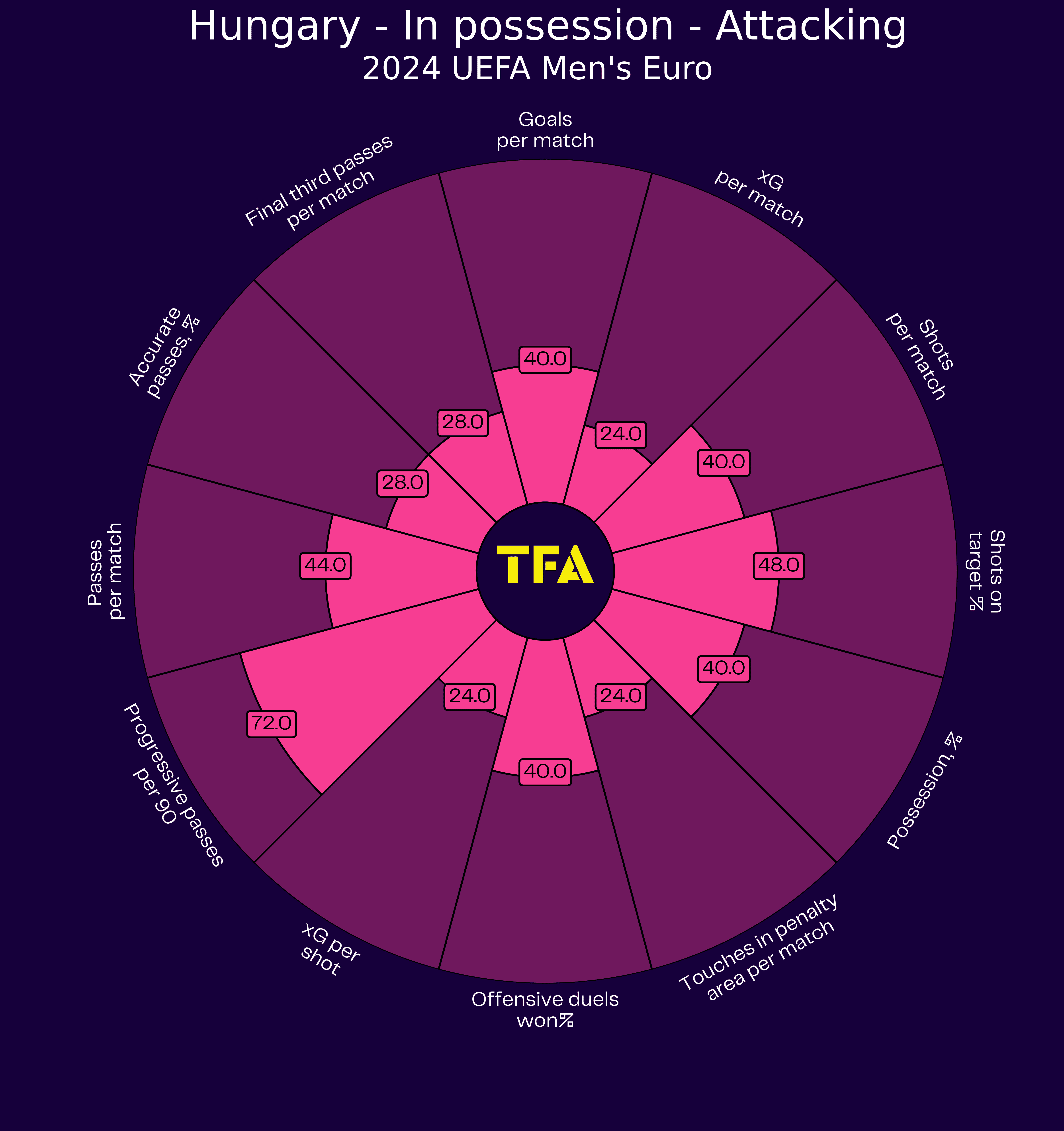
The key theme that has been established in the early stages of this scout report is that Hungary are a team that likes to keep the ball on the ground and to play through the thirds with well-executed transitions, something that they rely on heavily in a bid to control the flow of their matches and to ensure that their opponents never have an opportunity to settle.
That is reflected when breaking down their statistics, with it evident in this graphic that they rank very highly in percentile terms for progressive passes made per game.
Where there might be some concern is that, for all of that possession that they have in each outing, Hungary actually sit below the median in percentile terms when it comes to shots on goal and goals scored per game.
However, what is also clear to see is that shots on target is actually their second-highest statistic in this graphic, and so what that indicates is that they might not have as many opportunities as other teams at Euro 2024, but they can be backed to be accurate when they do get into the right areas.
Therefore, this is another sign that they are not a team to take for granted at any stage.
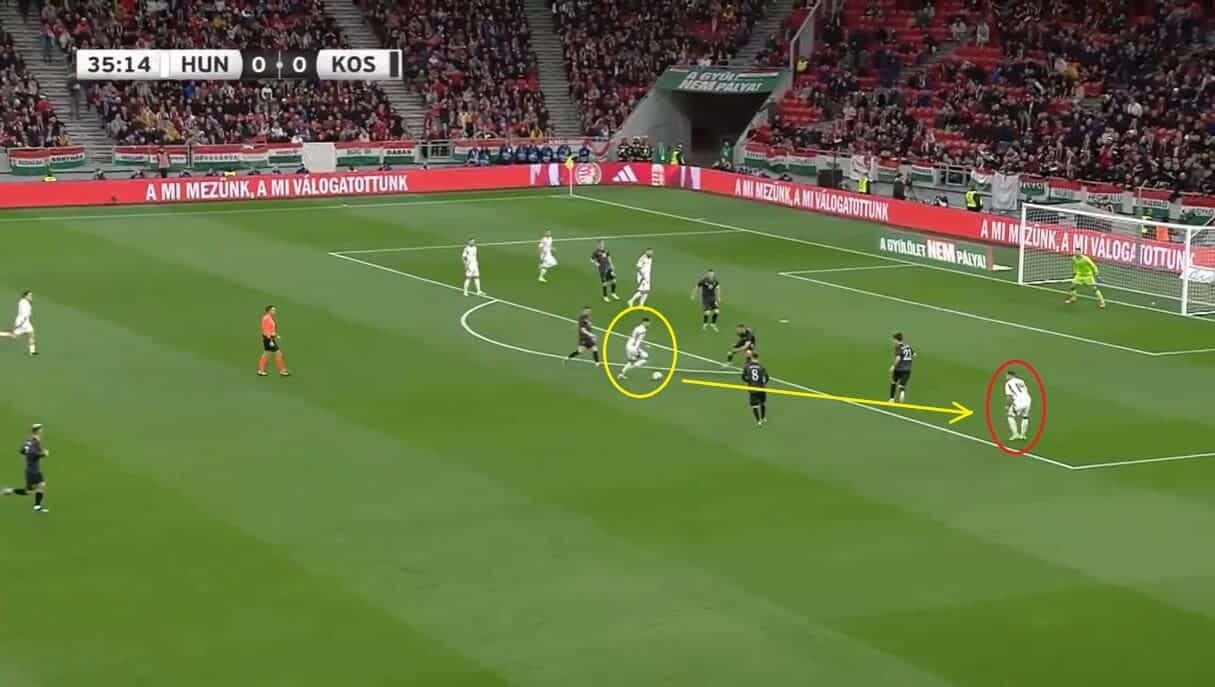
Hungary’s ability to rack up so much time in possession per game is due to their expansive play.
This comes from their wing-back formation, which gives them natural width whenever they move into the final third.
As a result, they have a better chance of keeping the ball for extended periods of play.
This can be especially useful against teams who set up to frustrate them, as Kosovo did here, with Hungary needing to demonstrate patience once they got into promising positions and to wait for the chances to come their way.
In this case, the presence of Bendegúz Bolla, who has spent the season on loan at Swiss side Servette from Wolverhampton Wanderers, has allowed Szoboszlai the luxury of moving the ball out to the nearside of the wing and forcing Kosovo’s narrow defensive line into splitting and stretching out, which then allows the Hungary captain to break between them and to receive the return pass from Bolla before shooting at goal.
Whilst the goal might have been prevented by Napoli defender and Kosovo captain Amir Rrahmani getting back just in time, it was a warning sign of how effective Hungary can be when they get into dangerous areas of the field and that their wing-backs play a vital role in enabling the whole machine to work to its full capability.
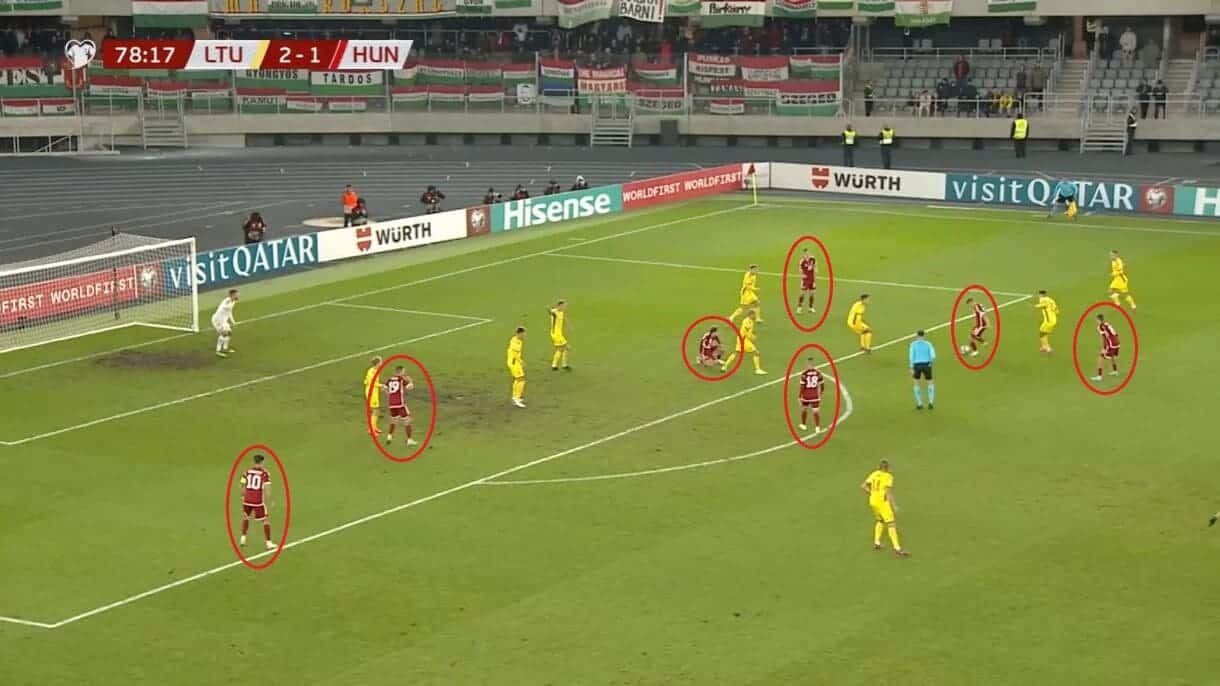
The reason that Hungary, like so many in the modern game, favour the use of wing-backs is that it gives them a greater chance of overloading the final third with numbers and, therefore, allows them to play with a higher probability of converting their opportunities.
This is because they can have their striker, inside forwards, wing-backs, and sometimes one or both of their midfielders pushing up the field whenever they have the ball.
So situations like this occur when there are seven players in close proximity to each other and with a chance of sending the ball towards goal.
When looking at moments like this, it is of no surprise that they have averaged 1.5 goals across their two matches in 2024 to date, with there always being the possibility of rebounds being seized upon.
So teams always have to be wary of second or even third phases in each attack, which can often catch them out.
On this occasion, Lithuania did manage to keep Hungary at bay, but only just, with Varga and left wing-back Zsolt Nagy both seeing their shots blocked before Styles ended up firing wide, but the point still stands that all three were in the right place to keep Hungary in control and that teams will have to remain rigid and steadfast if they are to prevent Rossi’s team from finding the back of the net.
Defensive Phase
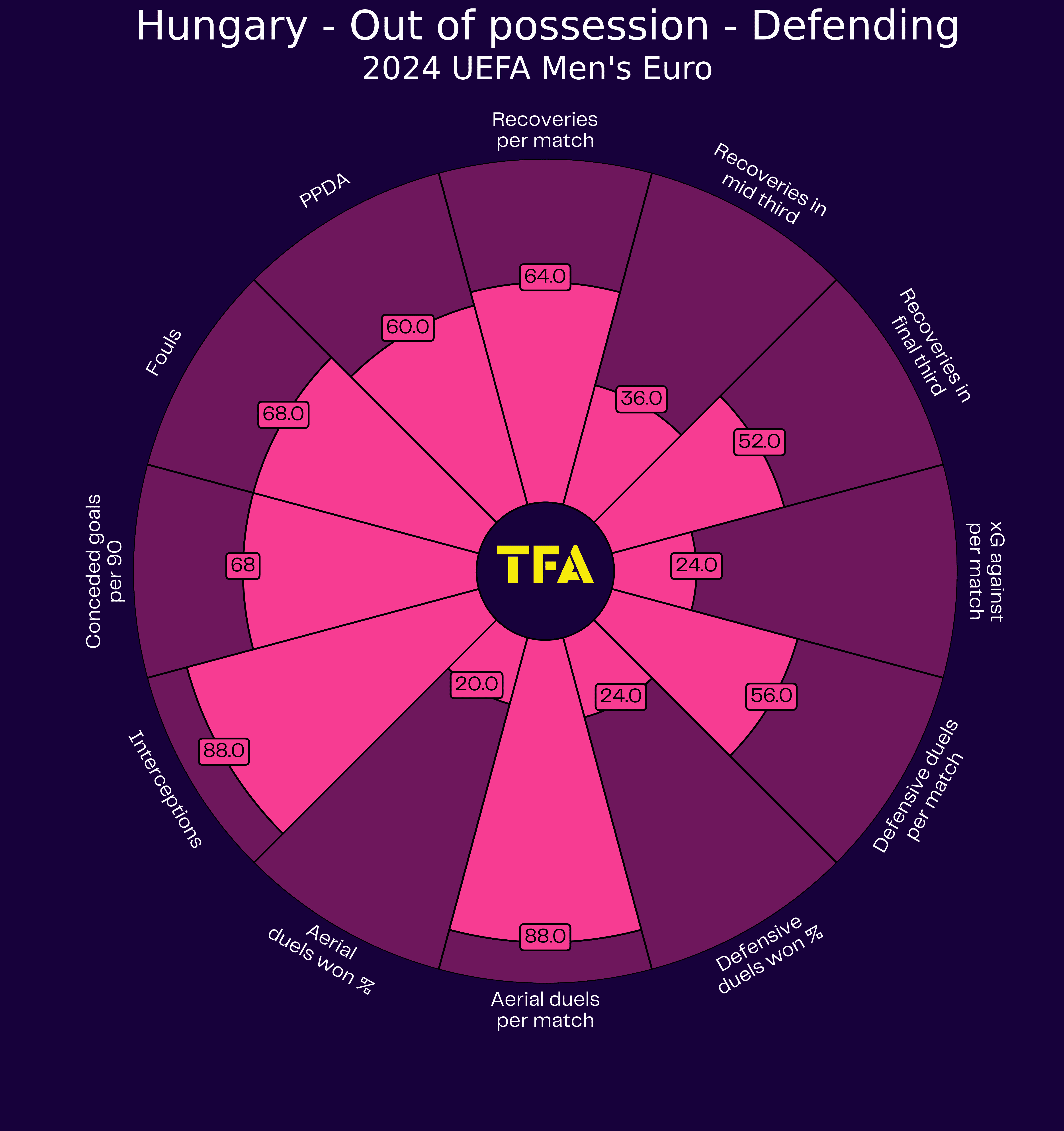
When looking at Hungary’s defensive play, what becomes clear is that, despite having experience inside their own third and players who have played at international level for a long time, they are not the most secure and will give chances away to their opponents.
In particular, what catches the eye in this graphic is that they don’t win a high enough percentage of their defensive or aerial duels, with them ranking poorly in percentile terms for both of these, so there could be times when they are too easy to break down.
However, it is also important to point out that they rank highly for goals conceded per game, which shows how they might concede chances at times too cheaply, but they don’t often allow them to come to anything more than that.
Couple that with the higher percentile rankings for recoveries made, and it is clear to see that they won’t be easy to score against.
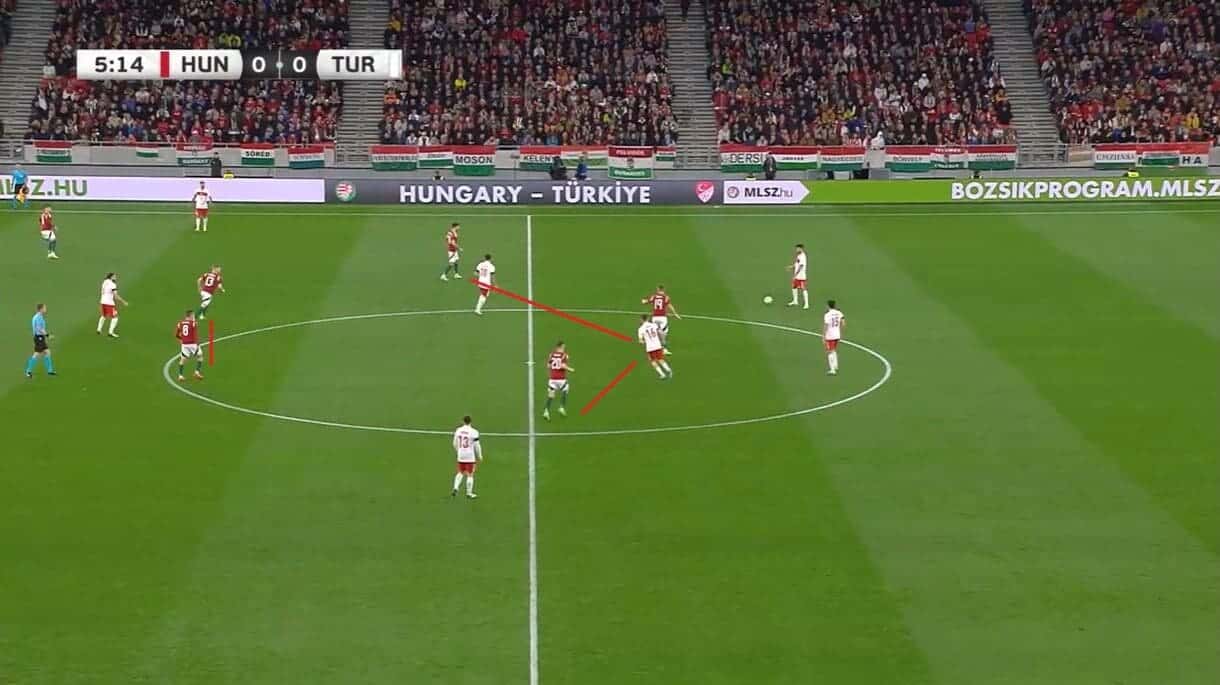
This is not to say that Hungary don’t make any effort to defend higher up the field.
It is clear when watching them that they do look to work in unison as soon as they lose the ball to keep their opponents at bay.
However, the issue is that they tend to stay too narrow.
Yet, there are too many gaps open between each of their ranks, as is shown here through both Szoboszlai and Sallai tucking in either side of Varga and Nagy and András Schafer forming a tight midfield line behind them, but with there being a sizeable amount of space between the two sets of players.
As a result, Türkiye are able to progress the ball through their opponents with little issue, with defender Samet Akaydin able to find Leicester City’s on-loan Galatasaray forward Yunus Akgün, and that then materialises into a shot on goal for Orkun Kökçü.
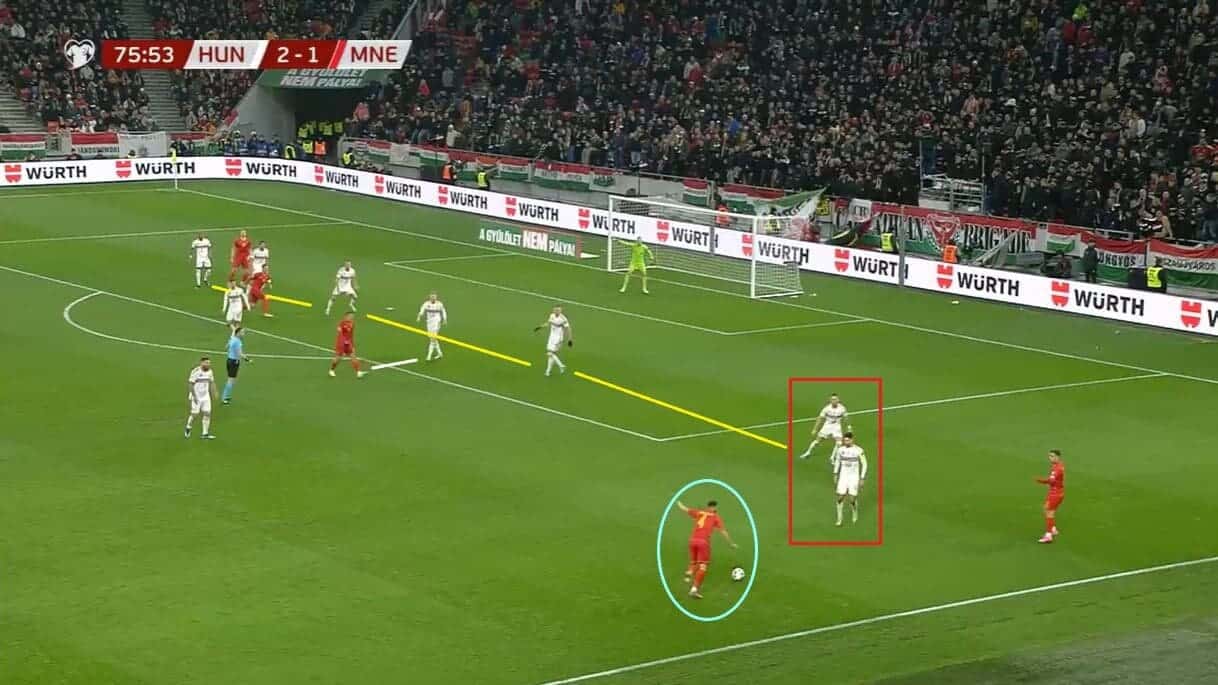
It is for this reason that they tend to rely so heavily on their back five and will need them to be in form once Euro 2024 gets underway.
This inability to win balls higher up the field is likely to be picked up by all three of their Group A opponents (Scotland, Switzerland, and hosts Germany).
However, fans needn’t be too concerned as making clearances and resembling a brick wall is where those inside their own third are at their best.
In this case, Montenegro are looking to find a way through and have seen their wide duo of Andrija Radulović and Marko Vukčević closed down by Nagy and Szoboszlai.
The eventual delivery by the latter is then won in the air by Lang, who manages to reach it before former Manchester City striker Stevan Jovetić can run through to divert it towards goal.
The other thing to point out is that Hungary look to defend with a blend of tactics, in that they press from the front and then combine zonal marking techniques with player-to-player defending, shown here by the three centre-backs holding their position whilst Zsolt Kalmár keeps a close eye on Nikola Krstović ahead of him.
Therefore, when looking at why Hungary might concede chances but not necessarily goals, this is something that needs to be factored into the equation.
Transitions
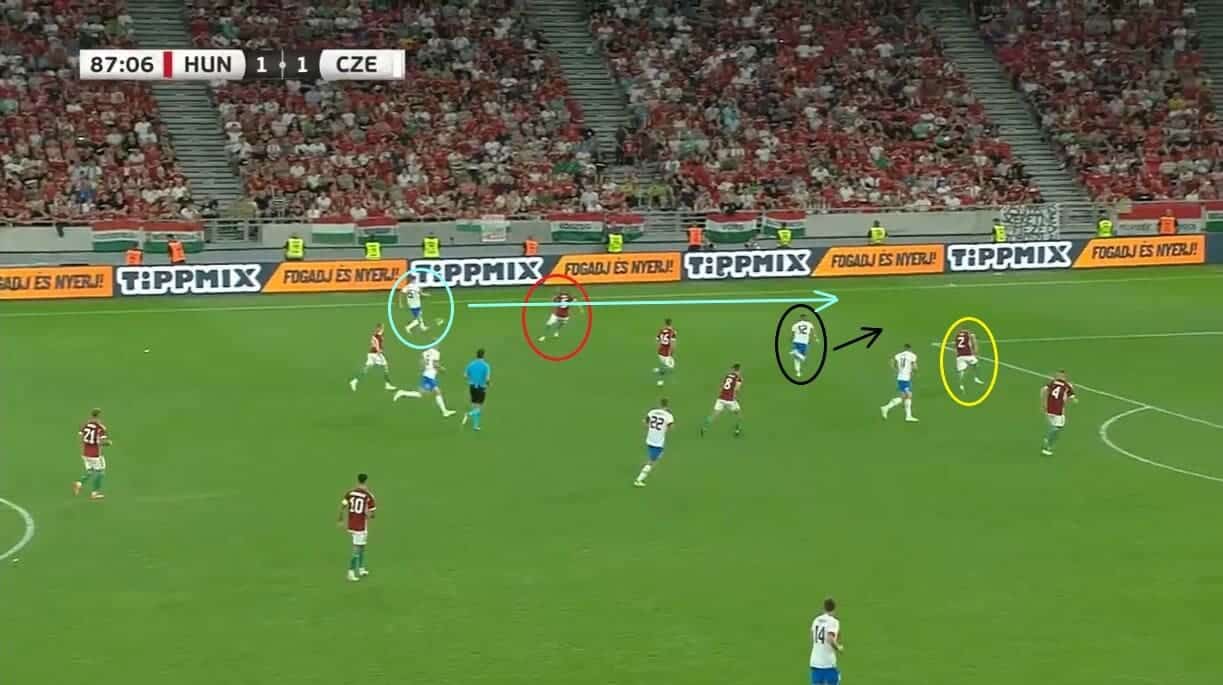
Winning aerial duels and staying robust at the back is not the only thing that the back three are tasked with, though, with another of their responsibilities being to work with the two wing-backs and to ensure that any gaps on each side of the field are securely plugged whenever Hungary lose the ball and become susceptible to counterattacks.
In this case, Czechia had managed to move the ball into a dangerous position and are looking to expose the advanced positioning of Attila Fiola, with Lukáš Sadílek spotting the run made by Jan Kuchta and feeding the ball into the territory that had been left open behind the right wing-back.
Kuchta looked to have the time and space to control the ball and to then turn and make an inverted run towards the Hungarian goal area here, but what he had not counted upon was that Lang had realised what was happening and had been tracking his run to ensure that he would be under pressure as soon as the ball arrived at his feet.
As a result, Kuchta’s only option here was to shoot at goal from an acute angle, with the ball travelling harmlessly out of play for a goal kick.
With Hungary winning 61.1% of their defensive duels this year and succeeding in 69.8% of them in 2023, it is clear that winning battles like this does not phase them.
So, they will always have a way of minimising danger when faced with rapid transitions from their opponents and ensuring they have as low a success rate as possible.
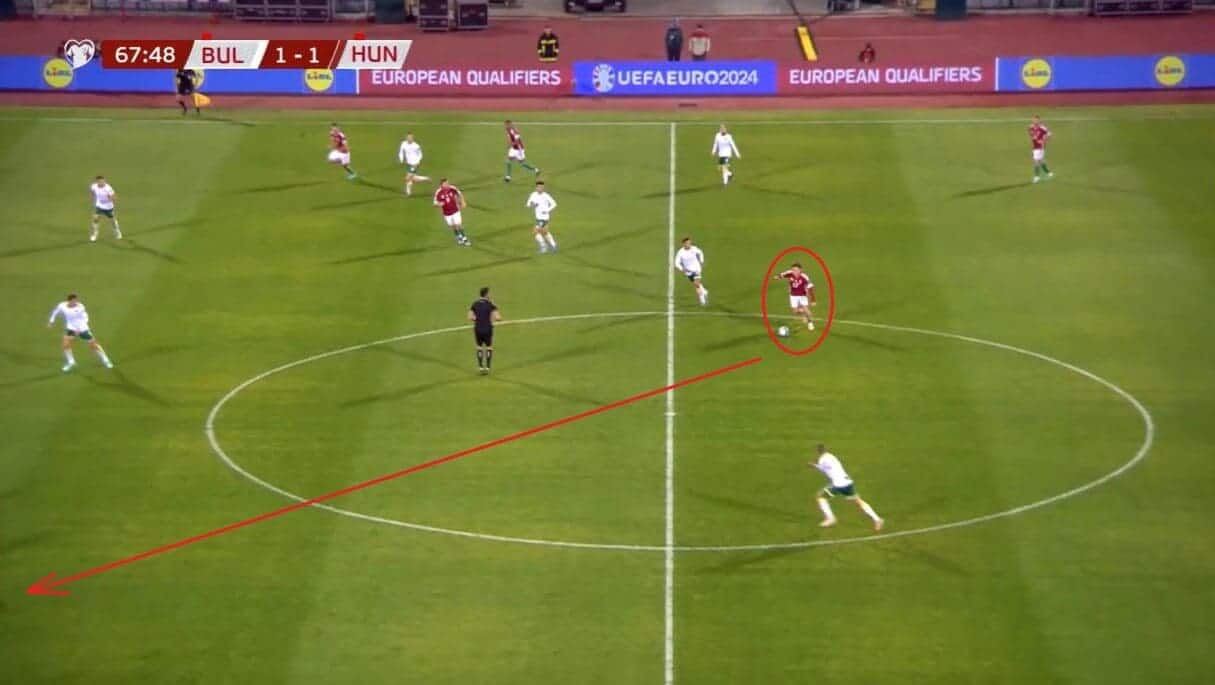
When it is Hungary who are on the attack, that ability to play at a constant tempo once again becomes key to allowing them to dominate possession and to make it incredibly difficult for opponents to regain the ball, with them having an 85.3% passing accuracy so far in 2024 and that only being marginally larger than the 85.2% that they registered throughout the entirety of last year.
There are several players who have a major role to play in this being possible, and one who tends to be at the heart of these positive passing sequences is the aforementioned Styles.
It has already been highlighted in the analysis that his role is to move between the boxes and to assist both defensively and in attack, and the fact that he has an individual passing accuracy of 87.1% for this year alone shows that he rarely makes loose passes and knows where his teammates are at all times.
In this case, against Bulgaria, he received the ball from Négo and sent it towards the nearside wing for Szoboszlai to run onto without showing any hesitation.
That confidence with the ball at his feet and his arrow-like precision have made him such a dependable player for Rossi’s side, and it shows why so much of Hungary’s good work in transition will always involve him in one way or another.
Forwards
It was mentioned earlier that Hungary have a wide range of ages in their team, and that lends itself towards them having different ways of setting up, and that is no clearer to see than in their forward options.
To explain, Varga is the type of striker who suits games where the ball is kept on the ground for longer periods of play, which is why he starts most matches, but the player likely to be his main understudy, Martin Ádám, is someone who offers a bigger aerial presence and a focal point at the top of the field.
Therefore, Hungary can be transition-focused, or they can look to absorb pressure from their opponents and can then hit them on the break, and it is that level of adaptability that is so key for any team to have in a tournament of this magnitude, with it already highlighted that they will be coming up against different types of teams who approach matches in different ways.
Beyond these two, Hungary don’t have many experienced players to choose from, with Zalán Vancsa and Kevin Csoboth still relatively new to the international game and so likely to only make appearances when Rossi feels that there is a chance for them to gain a taste of what it is like to compete at this level, but it will certainly be interesting to see as the tournament goes on how Hungary look to approach each match with regards to who is selected to lead the line.
Midfielders
It is not only in the forward areas where Hungary have a wide array of tactical options, with them also able to rotate in the midfield.
With four players in the starting XI due to the needs of their formation, there aren’t a lot of options who haven’t already been mentioned somewhere in the scout report, so it could well be that the changes that are made come from within the team, with the fact that Styles offers a goalscoring threat potentially leading to him pushing forward at times, whilst Szoboszlai could move into the same role that he has occupied all season for Liverpool.
If that were to happen and Styles didn’t make the opposite move, then Philadelphia Union’s Dániel Gazdag is one of those squad players who could come in to replace him in the inside forward role.
Likewise, there are not many wingers in the squad, with the wing-back formation not requiring them to be present, and Sallai is perhaps the only one who can play as a wide attacker.
With that in mind, it can be expected that, regardless of how Hungary get on in their group matches and potentially in the knockout rounds, they are unlikely to alter their formation between games.
Defenders
The fact that most of Hungary’s wing-back options are defenders by trade implies a general desire for players in those areas to be solid to beat first and foremost and then use that as a platform to build their attacks on.
However, as with the rest of the team, there are options and opportunities for Rossi to alternate his setup if needed, with Nagy being a more defensively-minded player compared to Kerkez and Bolla being a more attack-minded player compared to Négo.
Fiola is another player who should not be counted out, with him rated highly amongst the Hungarian fanbase.
It would not be out of the question to see him feature at some point in the tournament, too.
In central defence, Hungary have a settled trio and their alternatives are all younger players who are not deemed to be at the same level just yet.
However, all of them are backed to be stars of the future, so what could be the case is that players like Gábor Szalai make appearances as the tournament goes on but don’t necessarily unseat those more experienced names that are likely to feature in every match.
Key Player
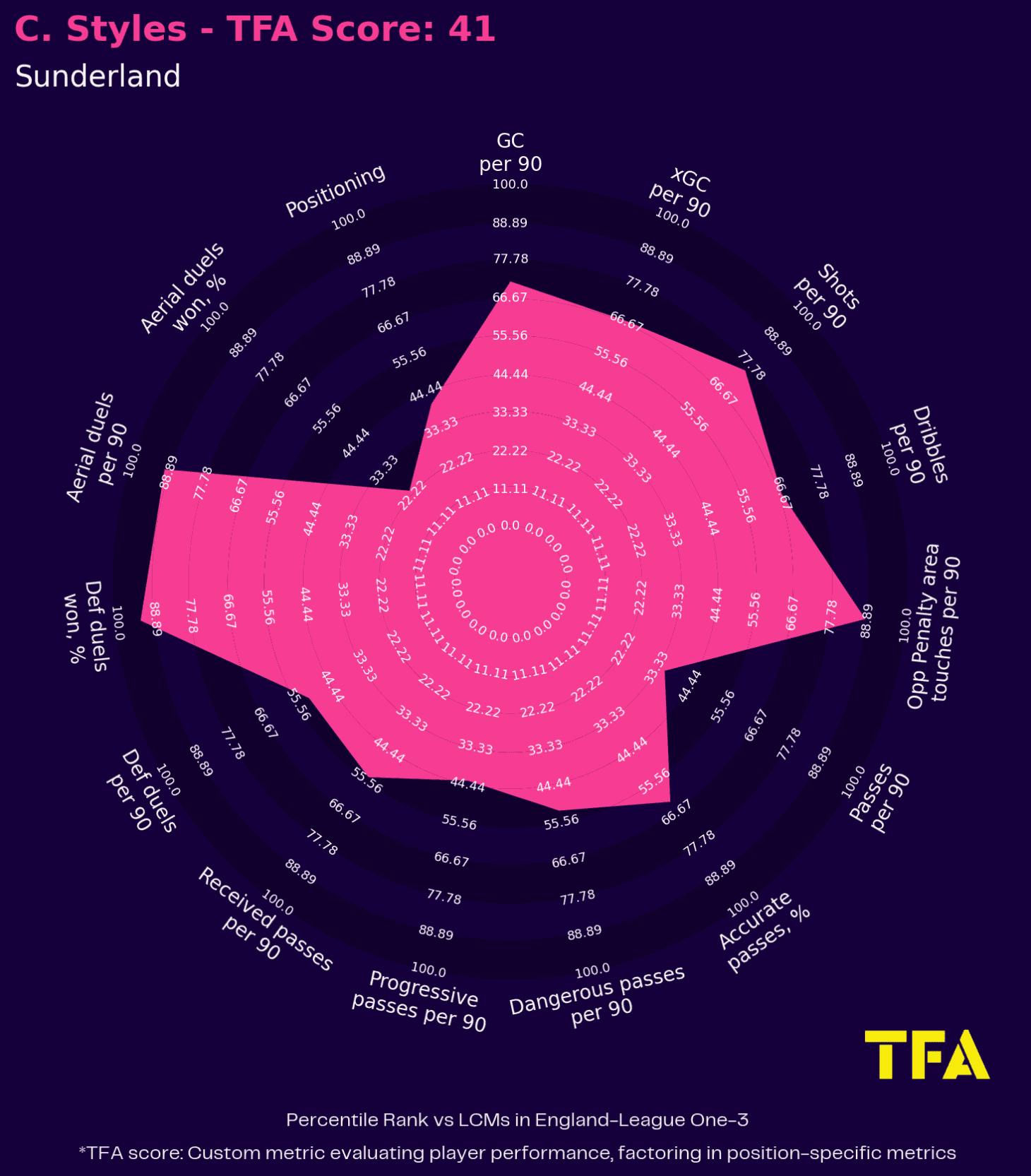
When looking at the Hungary squad as a whole, it might be imagined that Szoboszlai would be the obvious player to look out for, given his growing reputation after a very promising debut campaign in the Premier League.
However, whilst there is no doubting his quality around the field, so much of what Hungary do well comes down to their ability to move the ball around the pitch at a high tempo, and so the player that has already been picked out as essential to that is Styles.
It is also not only passes that he will offer, with the data in this graphic indicating once again that he did have a high number of goal contributions for Sunderland in the Championship last season and the fact that they went downhill after a promising start to the campaign shows how impressive that is.
With that in mind, his role is likely to extend beyond simply setting up chances, and it could be that he is seen in all three sections of the field as the games go on.
His becoming such an integral cog in the Hungarian machine ever since making his debut for them in 2022 shows how trusted he is around the team, and it is why he could be one to watch when the tournament gets underway.
Tournament Prediction
Given the group that they are in, it seems tricky to believe that Hungary don’t have a credible chance of progressing to the knockout stages, although it will not be a breeze for them, and they will have to navigate some tough matches if they are to get that far.
Hosts Germany, in particular, could be tough opposition and will likely get the better of them, but they will see both Scotland and Switzerland as winnable matches if they approach them in the right way and play well on the day.
However, whether they get any further could well come down to how they fare in those matches and how they look as an overall package following the group games, although it does seem unlikely that they will get too deep into the tournament, given their tendency to invite pressure at times and the fact that the quality of the opposition will only increase as the tournament goes on.

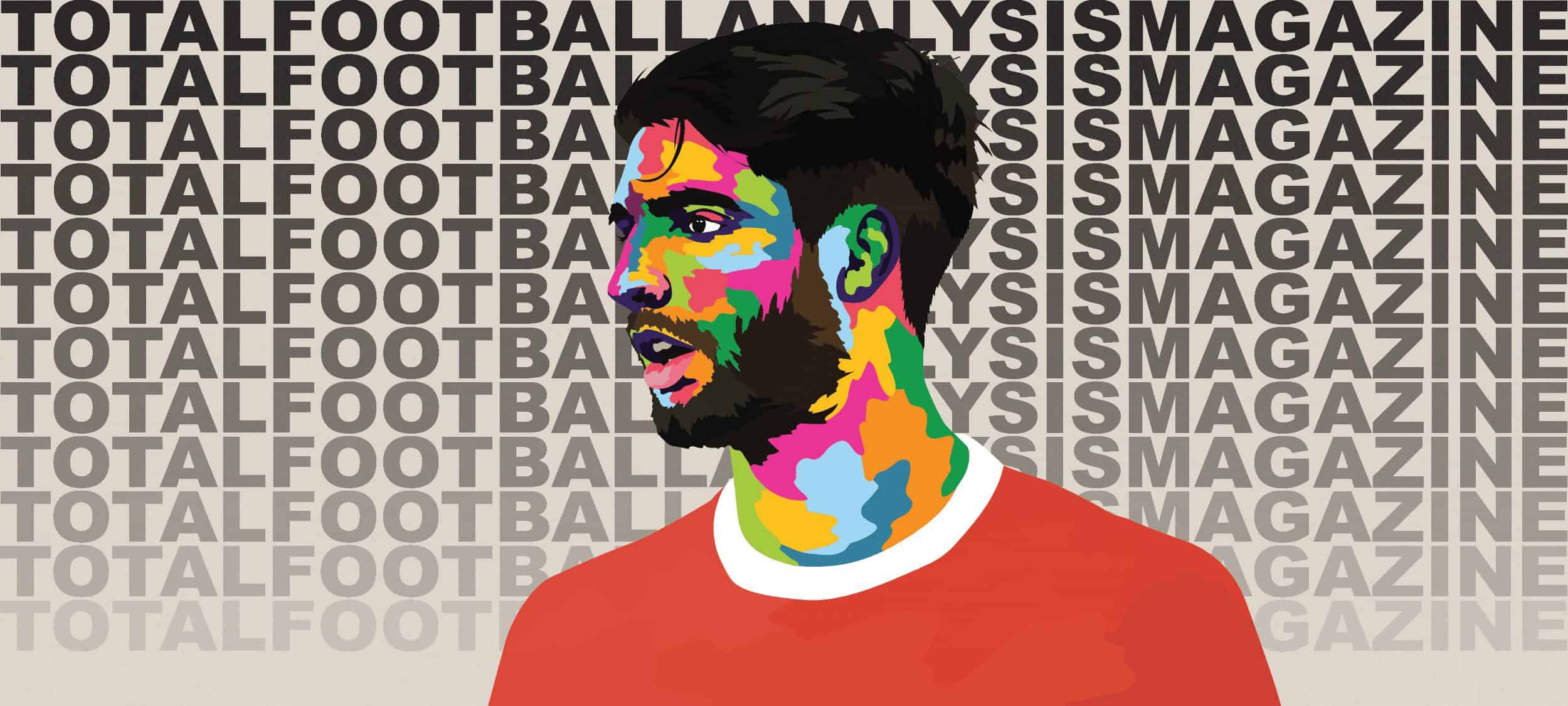



Comments